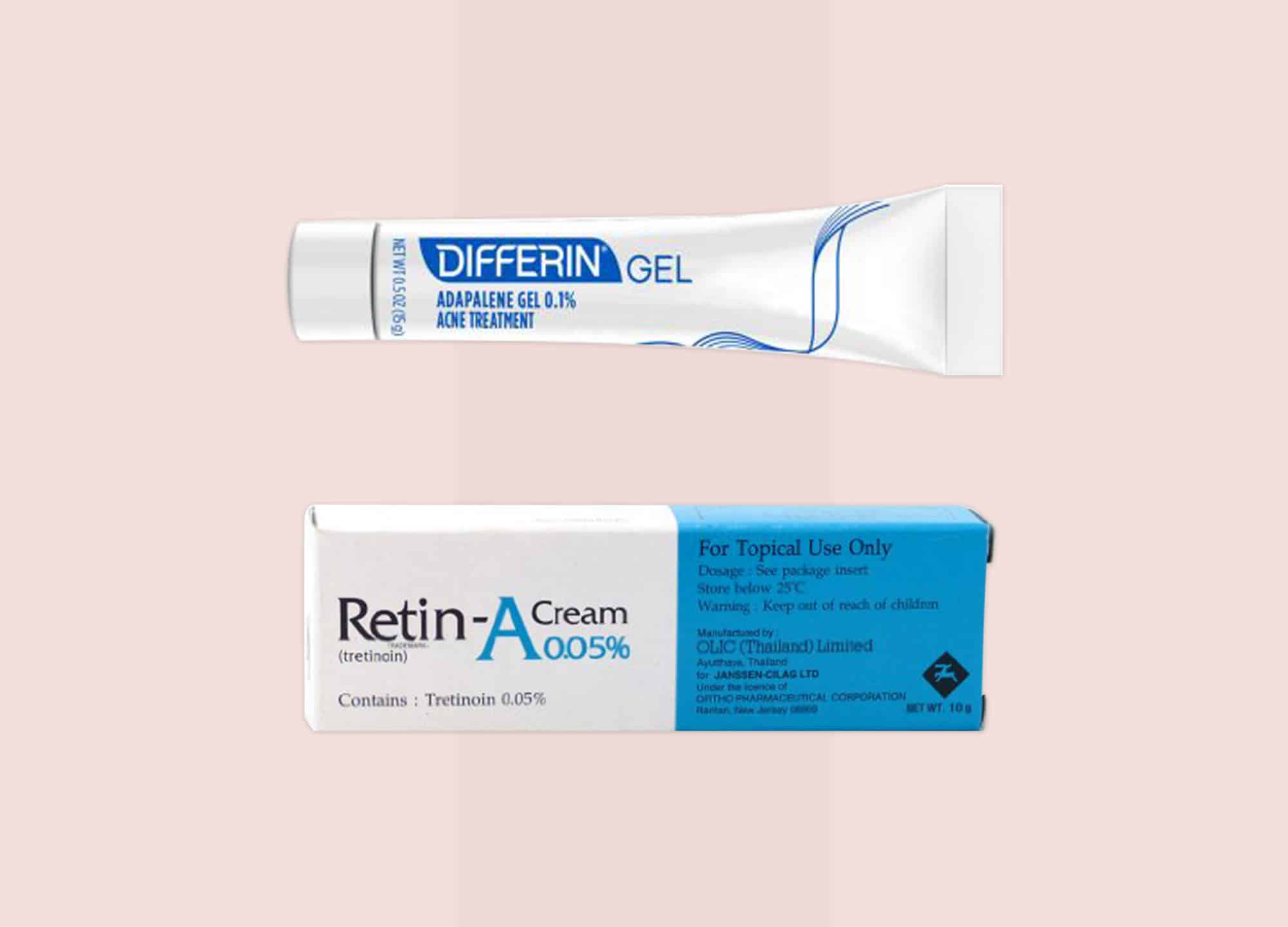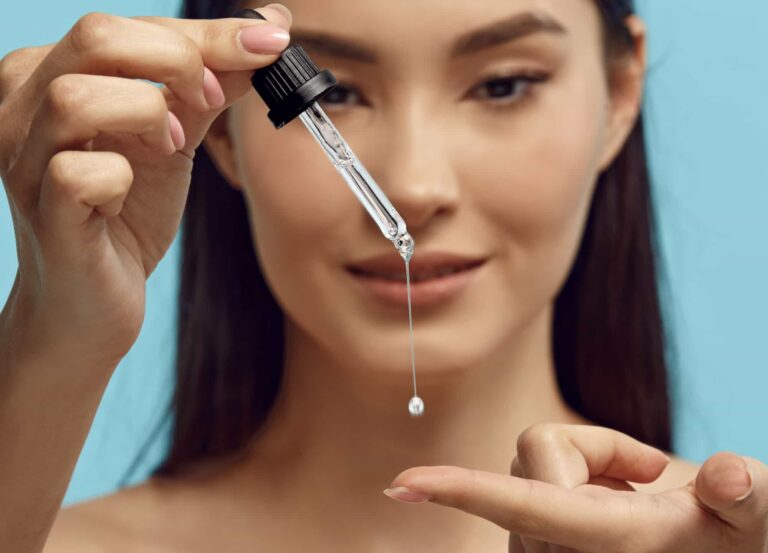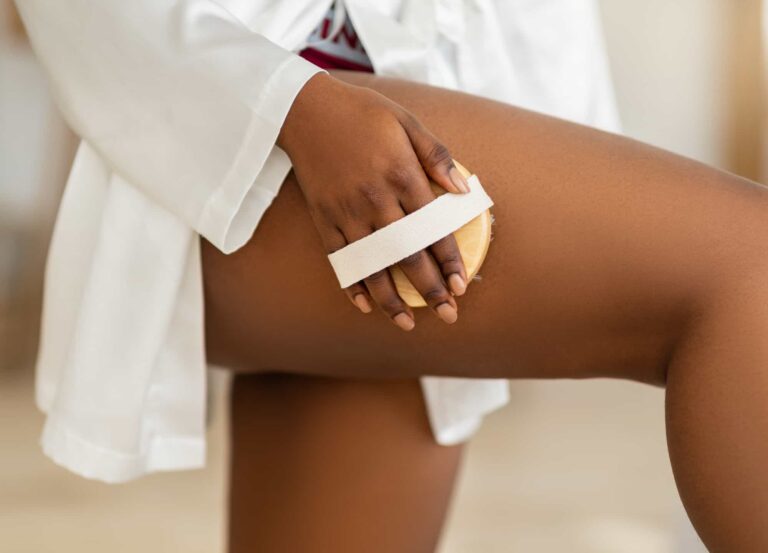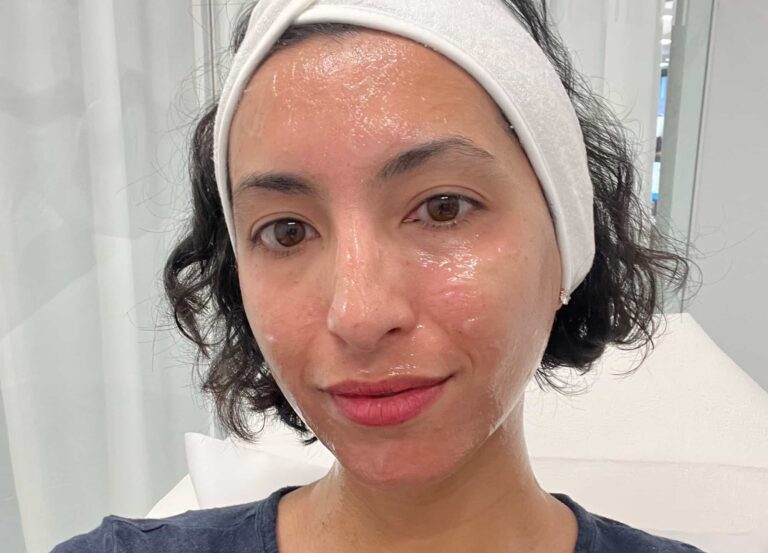Ask any dermatologist to name their skin-care must-have, and there’s a good chance they’ll be gushing about the benefits of using a topical retinoid—which combats both acne and aging by way of increasing cell turnover—before you can finish your question.
That said, the term retinoid doesn’t refer to just one product but a class of vitamin A–derived actives, including the ingredients adapalene and tretinoin. The former is the basis of Differin, while the latter is synonymous with Retin-A. (Tretinoin is also the active ingredient in a number of other brand name retinoids, such as ReFissa and Renova.)
Differin and Retin-A perform the same basic function, but there are key differences between the two that every retinoid user should know. We asked New York City board-certified dermatologists Dr. Jessica Krant and Dr. Sapna Palep to compare and contrast so you can choose the most appropriate option for your skin health.
Adapalene vs. Tretinoin: What do they do?
Like all retinoids, both adapalene (Differin) and tretinoin (Retin-A) bind to retinoic acid receptors (RARs) on keratinocyte cells in the skin. “This binding controls keratinocyte differentiation, maturation, and behavior, which encourages turnover,” says Dr. Krant. But “different retinoids bind to different [types of RARs], which explains their slight differences in action,” she says.
While both Differin and Retin-A increase cell turnover via the same binding process, Differin does so more gently, since it binds to just one type of receptor. Retin-A, however, binds to all three subtypes of receptors, making it a more potent option with a deeper exfoliation of the skin.
This more intensive cell turnover allows Retin-A to effectively smooth wrinkles and diminish brown spots, which is why it’s so frequently praised for its anti-aging abilities. Differin, on the other hand, is intended for the treatment of acne rather than wrinkles and skin aging.
Though it’s not FDA-approved for doing so, Differin gel can also be used to treat early signs of aging, says Dr. Palep. While more research needs to be done on the anti-aging effects of Differin, one study did find significant improvement in wrinkles after long-term use.
Do I need a prescription for Differin or Retin-A?
Until recently, the answer was yes, on both counts. But due to its milder nature, Differin was granted FDA approval as an over-the-counter (OTC) acne treatment. The adapalene gel is available in two different concentrations: 0.1% or 0.3% (only the former is available without a doctor’s appointment).
Retin-A is available in concentrations ranging from 0.025% to 0.1% and is a prescription-only topical acne medication. While the brand Retin-A is FDA-approved only to treat acne, the products Renova and ReFissa—which are based on the same tretinoin molecule as Retin-A—are approved for the treatment of fine lines, irregular discoloration (hyperpigmentation and dark spots), and rough texture caused by photoaging.
Related: 9 Moisturizers Dermatologists Recommend Using While On Retin-A
How often should Differin or Retin-A be applied?
Though you should always consult a board-certified dermatologist to determine the regimen that’s right for you, Dr. Krant says that most of her patients apply a retinoid lotion like Differin or Retin-A nightly—but not right off the bat.
As when you add any new product to your routine, it’s important to give your skin time to acclimate, especially if you have sensitive skin or dry skin. For this reason, it’s likely your doctor will suggest applying a retinoid a few times a week at first, then slowly working your way up to daily application. The stronger the retinoid formulation, the longer this process might take. When using Differin or Retin-A, it’s absolutely crucial to use sunscreen with an SPF of 30 or higher.
Are there side effects when using Differin or Retin-A?
“The main side effects of all retinoids are the results of them effectively upregulating the development, turnover, and exfoliation of [skin cells],” says Dr. Krant, who cites inflammation, dryness, peeling, tightness, and redness as common complaints.
Since all skin is unique, there’s a chance that both Differin and Retin-A could cause this sort of skin irritation, says Dr. Palep. “But if I had to make a generalization, I would say that Differin is less irritating than Retin-A.” The reason for this harkens back to the fact that adapalene doesn’t bind to as many retinoic acid receptors as tretinoin, and therefore isn’t as strong.
Related: How to Prevent & Heal Skin Burns from Retinol
Am I a good candidate for Differin or Retin-A?
If you experience acne beyond the occasional breakout, are looking to stave off early signs of aging, or want to treat fine lines that have already appeared, a retinoid is likely a viable option for you.
“Technically speaking, everyone could use a retinoid,” says Dr. Krant. “But not everyone is able to figure out how to make it work for them. The conditions that make it the trickiest are rosacea, dryness, contact allergies, and general sensitivity.”
With that in mind, a board-certified dermatologist can help you determine what type of retinoid—if any—to use and weigh in on the adapalene vs. tretinoin debate, as well as craft a skin-care routine that proactively tackles potential side effects. For more information on how to use a retinoid without suffering from potential irritation, you can also check out these seven tricks dermatologists swear by for getting the best results from Retin-A.











